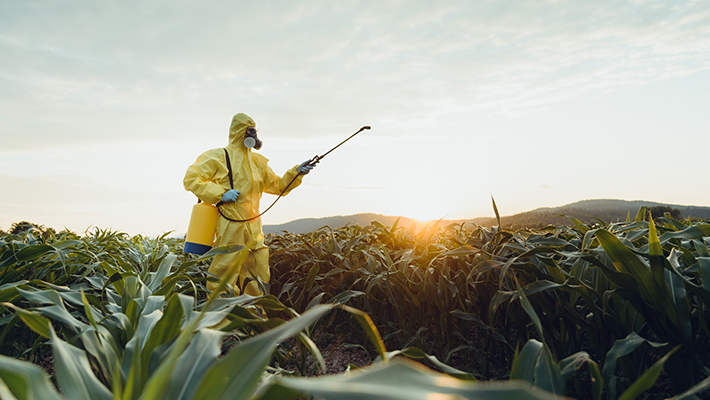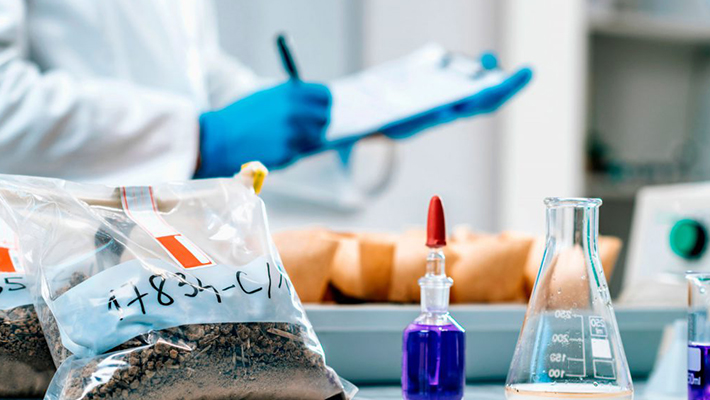
The evaluation covers the 2018/2019 and 2022 cycles. Food was collected in supermarkets from all regions
of Brazil.
On December 6th, the Brazilian Health Surveillance Agency (ANVISA) released the results of the most
recent cycle of the Pesticide Residue Analysis Program in Food (PARA). In this cycle, a total of 25 foods
were monitored, encompassing 5,068 samples collected during the 2018/2019 and 2022 cycles.
PARA aims to evaluate the presence of pesticide residues in food collected from supermarkets in all regions
of Brazil. These samples are submitted for analysis in specialist laboratories, using internationally
recognized scientific methods.
One of the novelties of this cycle was the inclusion of processed foods, such as ground coffee, oats, and soy
milk, which were analyzed for the first time. Furthermore, for the first time, foods of predominantly
imported origin were investigated, that is, grown outside the country, as in the case of pears, which more
than 90% of their origins have imported.
According to the report, the results of monitoring and risk evaluation of essential foods in the national diet
indicate that the foods of plant origin consumed are safe regarding the potential risks of acute and chronic
poisoning. The acute risk situations identified were occasional and of known origin. ANVISA has adopted
measures and recommendations to reduce the risks identified in these situations.
Acute and chronic risks
The main results obtained during the human health monitoring process cover two essential categories: acute
risk and chronic risk.
The acute risk is associated with the possibility of health impacts resulting from the consumption of a
significant portion of food containing specific pesticide residues in a short period, such as in a single meal or
one day of intake. In turn, chronic risk analyzes the potential for health damage arising from the lifelong
consumption of various foods with specific pesticide residues, considering the profile of food consumption
of plant origin in Brazil.
Throughout this evaluation cycle, acute risk was identified in 0.55% and 0.17% of the samples analyzed in
2018/2019 and 2022, respectively. Such data suggest signs of a reduction in acute risk compared to previous
years 2017/2018.
Regarding chronic risk, it was observed that none of the pesticides investigated presented exposure through
food consumption above the limit considered acceptable, called Acceptable Daily Intake (ADI). The ADI is
a reference parameter that represents the safety level of daily consumption of a food containing pesticide
residues, without causing harm to health.
The chronic risk evaluation takes into account data on food consumption in the country, obtained from the
Family Budget Survey of the Brazilian Institute of Geography and Statistics (POF/IBGE). This data covers
the population over 10 years of age, considering the daily consumption of all these foods and their
preparations throughout life. The scientific methodology recommended by the World Health Organization
(WHO) is applied by ANVISA in calculating chronic risk, considering the historical data from the
monitoring program and the maximum permitted residue limit, especially for foods not monitored during the
period. In this way, the evaluation is carried out based on the results of the research that involved 342
pesticides in 21,735 samples of 36 foods, collected between 2013 and 2022.
Acute risk reduction in oranges
One of the highlights of the program's history is the reduction of the acute risk in oranges. In the 2013/2015
cycle, 12.1% of the samples analyzed had the potential for acute risk. In the 2018/2019 cycle, this number
dropped to 3% and, in the 2022 samples, the acute risk remained at 0.6%.
One of the main reasons for this evolution was the ban on the use of carbofuran in the reevaluation process
and the exclusion of the use of carbosulfan in citrus (citrus plants) cultivation.
Furthermore, ANVISA implemented use restrictions for other substances, such as methidathione and
formetanate. For these pesticides, there was also an exclusion from authorization for use on foods such as
oranges, grapes, and strawberries.
Non-compliance x risk

The report presents two distinct categories of data: risk evaluation and the identification of non-compliance
with the maximum limits for pesticide residues established by ANVISA.
Non-conformity occurs when residues are above the limits allowed in the specific pesticide monograph or in
the presence of a pesticide not authorized for that agricultural crop. Non-conformity is indicative of flaws in
the production process and the implementation of good agricultural practices. (Monographs result from the
toxicological evaluation and re-evaluation of the active ingredients of pesticides and include, among other
information, the authorized crops and maximum residue limits for each active ingredient.)
These non-compliances are considered health infractions and represent risks, especially to the health of
farmers, due to the application of pesticides in disagreement with the recommendations for use or without
following these recommendations.
From the consumer's point of view, the main focus is on the evaluation of acute and chronic risks resulting
from the ingestion of certain foods. This evaluation determines the possibility of harm to the consumer's
health.
As for the restart of the program, the data released refers to the 2018/2019 and 2022 analysis cycles.
Collections in 2020 and 2021 were interrupted due to the Covid-19 pandemic. During this period, local
Health Surveillance concentrated their efforts on actions related to combating the pandemic, resulting in the
temporary suspension of the program.
Resuming the program in 2022 required meticulous planning, including
the mobilization and training of new local Surveillance agents, the full operation of the new features of the
sample management system, the execution of a new bidding contract for laboratory analyses, and the
feasibility of transporting samples. For this reason, the 2022 cycle included a reduced number of samples
compared to previous cycles, but a gradual increase in this number is planned from 2023.
2018/2019 Cycle
- 3,296 samples analyzed.
- 33.2% of samples had no residues.
- 41.2% of samples with residues within the allowable limit.
- 25.6% of samples with non-compliance, which could be the presence of an unauthorized pesticide
- or residues above the permitted limit.
- 0.55%, equivalent to 18 samples, presented an acute risk.
- 66% of samples could be tracked to the distributor and 28% to the rural producer.
2022 Cycle
- 1,772 samples analyzed.
- 41.1% of samples had no residue.
- 33.9% of samples with residues within the allowable limit.
- 25% of samples with non-compliance, which may be the presence of an unauthorized pesticide or
- residues above the permitted limit.
- 0.17%, equivalent to 3 samples, presented an acute risk.
- 67% of samples could be tracked to the distributor and 23% to the rural producer.
Imported foods
For the first time, a food that is mainly imported, the pear, has been analyzed. According to the Ministry of
Agriculture and Livestock (MAPA), more than 90% of the pears consumed in Brazil in 2018 and 2019 were
imported, with the majority being produced in Argentina, Portugal and Spain.
In the case of imported food, that does not have pesticide products approved in the country, ANVISA is
used as a reference the pesticide products authorized in Europe or the reference from the Codex
Alimentarius.
How the results are used
Over the last 10 years, PARA data has been used to guide the re-evaluation of pesticides. The program also
allowed the development of a joint ANVISA and MAPA standard for food traceability.
The results also guide the possibility of restrictions on certain pesticides for specific crops, such as
carbosulfan, methidathione, and formetanate, which had restrictions for some crops.
How the program works
- Samples are collected by State and Municipal Health Surveillance.
- Collections are weekly and each sample is registered in a sample management system before
shipping. - Transport is made possible through a technical cooperation agreement between ANVISA and the
Brazilian Supermarket Association (ABRAS). - Transportation needs to be done quickly so that food samples reach the laboratories without spoiling, in conditions for analysis.
- Samples are sent to two laboratories.
- Samples are analyzed as they were collected, without washing or removing the peels.
- For the analysis, the multi-residue analytical method is used. This is the most recognized and used technique for monitoring pesticide residues in food, being adopted by countries such as Germany,Australia, Canada, the United States, Holland, and others.
- For some specific pesticide ingredients, specific methods are used, to which the multi-residue technique is not applicable.
- Samples from the 2018/2019 and 2022 cycles were analyzed by the Central Public Health
- Laboratories (LACENS) Octávio Magalhães Institute (IOM/FUNED/MG), from Minas Gerais, and Adolfo Lutz Institute (IAL/SP), from São Paulo. In addition to these, to complement the analytical capacity of the program, the Eurofins do Brasil Análises de Alimentos Ltda laboratory was hired through a bidding process.
- As each sample is evaluated, reports are released by the laboratories.
- Using the results, ANVISA evaluates compliance with the maximum residue limit and the risk evaluation.
To find out more about the Food Pesticide Residue Analysis Program, click here.
Check out the presentation of the results and the PARA Report for the 2018-2019 and 2022 cycles.


